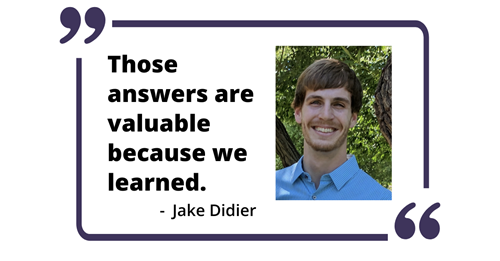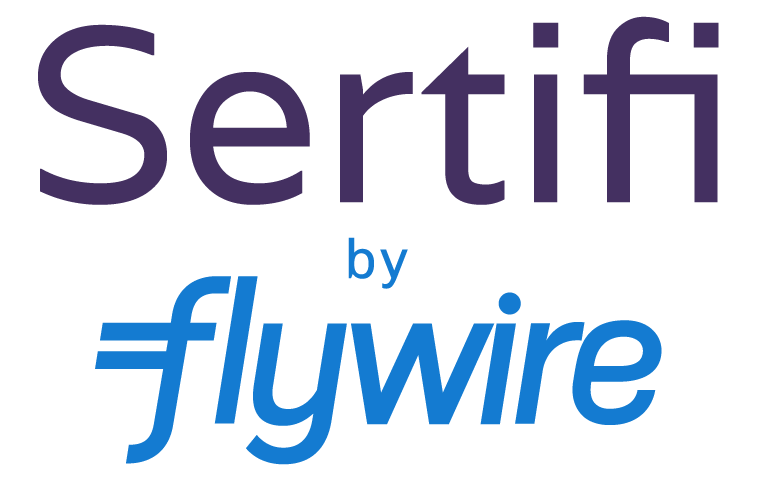Sertifi’s Q3 Hackathon Recap

Remember those late nights in college when the library was packed, and everyone was focused on their studies? When your deadline was midnight, and you raced against the clock to deliver your best work? Now instead of college, picture the Sertifi office. And instead of midnight, the deadline is 5 o’clock on a Tuesday.
That’s the reality for Sertifi’s engineering team once a quarter as they battle it out in our quarterly hackathons! I sat down with the winner of the Q3 hackathon, senior software developer, Jake Didier, to recap the event and his first victory at the company.
Mimi McNulty: Welcome Jake! Congrats on your win.
Jake Didier: Thank you! Happy to be here.
MM: Let’s start with your project. Can you explain what it was?
JD: My project was to generate signable images at most once asynchronously. Anytime a user signs a document, what they are signing is a bunch of images - jpegs. And sometimes, when a user goes to sign a jpeg, the signed image will spin, causing it to generate more images over time. However, most of the time, users are uploading documents to sign, and they are not jpegs. They’re PDFs, HTML documents, or Word docs, and we have to create those jpegs from those docs behind the scenes. If the jpegs aren’t ready in time, we will ask the system to create them again. And if that happens enough times, it overloads the system and makes everything slow for everyone. So, the goal of my project was to enforce us only requesting those images once. That way we don't overload the system by requesting jpegs over and over and over again because eventually the process would complete.
MM: What was the motivation behind your project? Why did you decide to do it?
JD: The overall motivation was that our team has had production incidents around this exact thing. We’ve been wanting to solve it and in order to do it, we’d need to involve some new technologies and some new infrastructure we haven't used before, which makes it great for the hackathon, because a hackathon isn't about making this thing ready to go to production; it's about proving your point in the ugliest, quickest as way possible. It doesn't need to be pretty; it doesn't need to go into production tomorrow. It just simply needs to prove we can do it this way if we want to do it this way. So, this was a good chance for me to take a deep dive into that body of work and understand how we could do it, what options we had, if it would even work how we want it to work, or if we need to rethink that – all without having to formalize the entire plan up front. So, I did all of the learning and all of the failing up front so now we can do all of the formalizing and planning to actually bring it to fruition.
MM: Had you worked on this project prior to the hackathon?
JD: Not by myself. It’s been a team effort. Last summer was when we noticed it being a problem because PDF engines were being overloaded. We've tried to do small things here and there to help the problem, but we haven't actually solved the problem. Our infrastructure team was able to put a band-aid in place that kind of fixed it, and they bought us time, but we still need to fully resolve this, otherwise it will eventually be a big problem. So, the hackathon was a way for me to actually take the deep dive to try and create a permanent fix.
MM: Wow! Well, I’m glad you took the time to flesh it out and save the day. Otherwise, we would have a real problem on our hands.
JD: All in a day’s work.
MM: It’s lucky you had the idea you had in the moment. If you hadn’t you may not have won, and the issue wouldn’t be in repair right now. I’m curious, what happens to the other teams’ ideas that don’t come in first place? Do they get revisited?
JD: If we want to follow-up on those ideas, they generally will result in some item in the backlog. Maybe it'll result in revisiting that POC and actually formulating a plan and design that makes it a reality. Because the POC is the proof of concept, we never want to take a POC and immediately give it to end users because like I said earlier, POCS are ugly. We cut corners to make it work and prove a point.
MM: What is the presentation process like?
JD: Well, every team presents their project, and no idea is skipped over. When we're all done, we as a group are able to identify what we learned, what we did, what worked, and what didn’t and that’s the best part. Sometimes the resolution may be, “Hey, I shot for the stars and unfortunately, I crashed. It didn't work out.” And that's ok because we learned. And that's the main goal here: to learn and then broadcast that learning for everyone else, and then we collectively figure out which learnings we think we can implement sooner than later because they'll actually help move the needle.
MM: Why do you like participating?
JD: I think the hackathon is a great opportunity for people to explore their ideas, take ownership of those ideas, and actually see what results can come from them. Sometimes when we're in our day-to-day, we're being handed bodies of work that we're executing against, and they're already fleshed out like itemized instructions. The hackathon gives you more freedom. It's up to you to decide how you want to do it. It gives people the chance to explore and maybe try new technologies and new languages. It allows me to attack a problem differently knowing that I can throw it away in two days.
MM: It enables your will to try something new and create.
JD: Yes. And for that reason, I think everyone on the tech side should play a role in the hackathon because whatever your day-to-day is, there's probably something that you've done that has frustrated you or you've thought could be done differently. And it's worth exploring because that's how innovation happens, right? It’s looking at problems we work on every day, and it allows us to try and do it differently. Then you can stand back and ask, “Is it better? Is it worse?”
Either way, those answers are valuable because we learned. The goal is to learn and grow.
MM: Wow. That is so great to hear. Each time I talk to someone from the engineering side of things, I am reminded how supportive your team is.
JD: It really is. Especially when you’re working with new people, and you get exposed to something new. That supportive dynamic gives you a chance to play and try new things in a really safe, controlled environment. And sometimes those who are working with you are familiar, and they can guide you and mentor in that situation, which is helpful. It's definitely more of a team sport. We either all win or we all lose together.
MM: I love that. It sounds like you all are doing great things and working really hard. Well, thank you for joining me and congrats again on your win!
JD: Thank you!
To learn more from the Sertifi team, check out our employee spotlight page here.
OUR LATEST AND GREATEST
Sertifi Next-Generation Agreements Platform
The Sertifi team is always working to further develop our platform to be the best it can be for customer use. Our reimagined user experience makes it easier than ever to sign documents, make payments, and send credit card authorizations – all wrapped up in a modern design tailor-made for hospitality and travel users.

